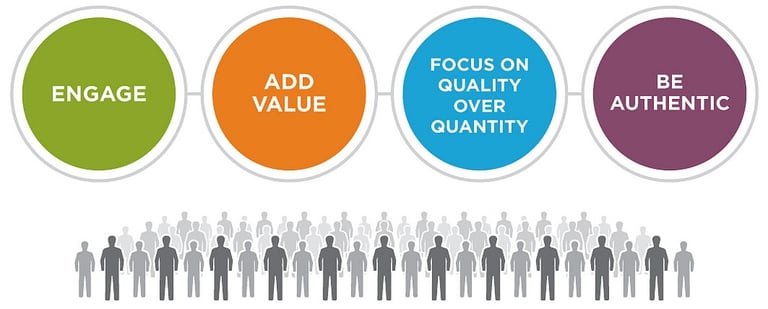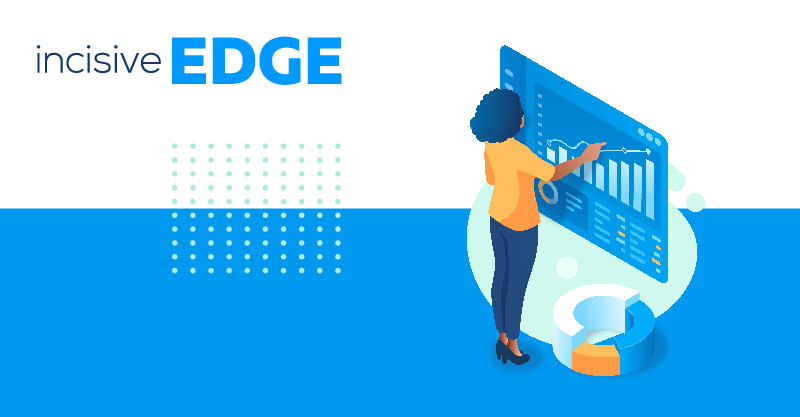If you’re considering implementing the inbound methodology in your marketing strategy, you’re probably wondering about inbound content marketing ROI and how exactly it works.
Content marketing, as a part of an inbound marketing strategy, is about changing or maintaining behaviour with the ultimate goal of improving savings, increasing sales, and building customer retention. If your inbound marketing tactics, including content marketing, aren't delivering the desired results, it's essential to evaluate and refine them to ensure they are worth the investment of time and resources.
Consider why you are creating content and how much content you need for a particular channel, be it your blog, website or social media presences such as Facebook, Twitter and LinkedIn.
· Read more about Inbound Content
Do you need to commit to every inbound marketing channel just because they exist? Some channels may be more effective for promoting certain kinds of resources than others, and focusing on those that are most relevant to your objectives can help improve your inbound marketing ROI. Consider your inbound marketing strategies and tailor your approach to suit them.
Effective content marketing really thrives on quality over quantity.

High-value content will be able to lift your ROI, by helping to remove one or more of the steps that a buyer has to take. Adding value and solving inherent commercial problems will build trust in your brand and lead customers away from your competition.
What steps should I take to convert visitors into customers
The steps your buyers have to take, determine the biggest problems they face during the sales process. You must create content to solve these issues

Alternatively, help to educate the buyers on how to solve the problems for themselves.
Create blogs and other easily digestible resources by repurposing and reformatting your content, which can help maximise your marketing efforts and reach a wider target audience (infographics and images are processed 60,000 times faster than words and deliver high impact). Then promote your content through a mix of paid, owned, and earned media channels to ensure it reaches your target audience effectively. Avoid using outbound methods and your sales team.
This should all be linked back to your core resources to help drive conversions. The aim is to have a single, core resource which resonates with your buyers, driving conversions.
But how can you measure the effectiveness of your content marketing?
Whilst pageviews, shares or anecdotes from buyers have typically been relied on to measure effectiveness in the past, there are now quantitative metrics which can be employed.
An effective inbound content marketing ROI strategy should focus on three key areas:
1. Performance
2. Operation
3. Return On Investment (we suggest that this mix results in a Return On Objectives as much as a Return on Investment)
Performance as a metric measures the “return” you are seeking as denoted by ROI, such as lead generation via sharing and engagement, retention as measured by subscribers, consumption as reported through pageviews/ dwell time/ bounce rate/ downloads and sales impact, through opportunities influenced and revenue growth.
Operation as a metric is the “investment” within ROI, measuring the costs of the production, distribution and promotion of your content across all channels.
The total ROI metric combines the performance and return metrics together, such as sales-closed, versus each pound spent on content creation and deployment.
What is the average ROI for content marketing?
Content marketing has become an integral part of inbound and digital marketing, where valuable, relevant, and consistent content is created and shared to attract and retain a target audience. The average ROI for content marketing varies, with factors such as the type of business, industry, target audience, and content marketing strategy effectiveness influencing it. Studies show that the average content marketing ROI is 3:1, indicating that businesses earn £3 for every pound spent. However, this figure can be much higher for many businesses based on their marketing efforts.
The quality of the content and its consistency are crucial factors that determine the success of your content marketing campaigns. Informative, engaging, and targeted content can produce positive results for businesses. Having a great content strategy, and regularly publishing high-quality content helps build credibility, increases brand awareness, and improves customer engagement. Using effective distribution channels such as social media platforms and email marketing to promote content is also essential.
Investing in high-quality, relevant content and using effective distribution channels are key to achieving positive results from content marketing. Having a clear understanding of the target audience, their needs, and the type of content that resonates with them is essential before implementing a content marketing strategy. With the right strategy, content marketing can be a valuable investment for any business.
What is a great ROI for content marketing?
As more and more businesses invest in content marketing, it's crucial to understand how to measure the success of your investment. Determining a great return on investment (ROI) for this type of marketing can be a tricky process, as there are several factors that can influence it. The type of business, target audience, industry, and content marketing strategy all play a role in determining the ideal ROI for content marketing. As a general rule, a great ROI for content marketing is around 5:1 or higher.
Achieving a great ROI for content marketing requires a well-planned and executed strategy that focuses on creating high-quality, engaging, and relevant content for both humans and the search engine. Your content should resonate with your target audience and provide value to them, which can lead to increased engagement, brand awareness, and customer loyalty.
To achieve a great ROI for content marketing, it's essential to choose the right distribution channels to promote your content. Social media platforms like Facebook, Twitter, and LinkedIn can be excellent platforms for sharing your content and engaging with your audience. Email marketing is another effective way to distribute content and keep your subscribers updated with the latest content.
Back to You
In conclusion, inbound content marketing can be a powerful practice for businesses to attract and engage with their target audience. By creating valuable content that addresses the needs and interests of their audience, businesses can establish themselves as thought leaders in their industry and build a loyal following.
If you have more questions about the ROI from inbound content marketing and how you can begin implementing this strategy for your business, contact us today.







